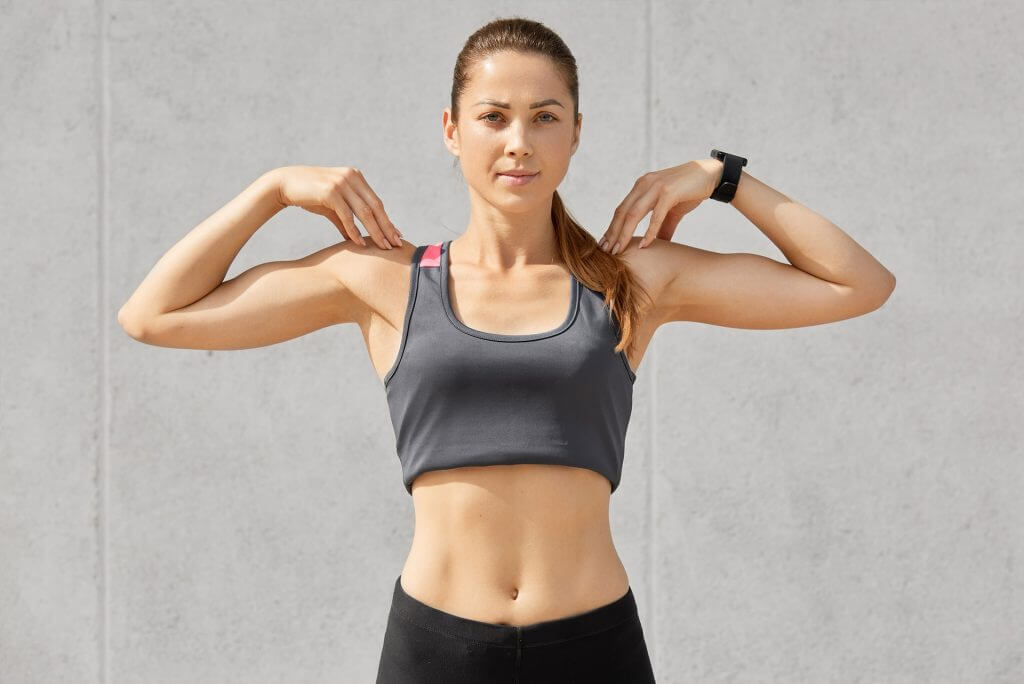Stability Exercises For The Shoulder
Understanding Rotator Cuff Pain
The rotator cuff is a group of muscles that surround the shoulder joint, which we generally rely on for stability and support for a wide range of motion. They comprise of four muscles, namely supraspinatus, infraspinatus, teres minor and subscapularis.
These four muscles form a cuff around the head of the humerus (upper arm bone) and contribute to the dynamic function and stability of the shoulder.
Symptoms of Rotator Cuff Pain
Pain
Persistent pain in the shoulder, especially when lifting the arm could be a sign of rotator cuff pain. In most cases, the pain may be isolated to the front or side of the shoulder but can also extend down the arm.
Weakness
If you’re suddenly having difficulty in lifting or rotating your arm, then this too can signal a problem in your rotator cuff. In particular, you may find that performing overhead activities a little more challenging than usual.
Sleeping difficulties
Rotator cuff pain can interfere with sleep, especially when you end up applying pressure on the affected shoulder.
Limited range of motion
When you have reduced range of movement, like reaching behind your back, consult your therapist as this may be an underlying problem concerning your rotator cuff muscles.
Catching or clicking sensations
Some people may experience sensations of catching or clicking when moving the shoulder. If these tendencies are consistent or accompanied by discomfort, then it’s worth getting your shoulder assessed.
Causes of Rotator Cuff Injury
The causes of rotator cuff injury can vary between individuals. More importantly, it’s worth noting that it’s not just blunt force or trauma that causes shoulder discomfort. Sometimes, prolonged inactivity and poor posture can lead to injury.
Overuse or repetitive strain
Activities that involve repetitive overhead arm motion or constant use of the shoulder joint, such as painting, lifting weights, or certain sports (e.g., baseball, tennis), can hurt the rotator cuff muscles over time. And when they’re not given room to recover, this can lead to injury.
Age-related wear and tear
According to Mayo Clinic , the risk of rotator cuff injuries increases with age due to the natural wear and tear of muscle tissues. Furthermore, the tendons also degenerate over time, which weakens them. Thus, some people end up getting hurt while doing the things they’ve normally done as a routine.
Trauma or acute injury
A sudden impact or trauma to the shoulder, such as a fall, car accident, or direct blow, can cause acute injuries or other inflammatory conditions that can cause tears or strain in the rotator cuff muscles.
Poor posture
Incorrect posture, especially for a prolonged period, is one of the leading causes of rotator cuff strains. Rounded shoulders or forward head posture can lead to muscle imbalances and stress, and heighten the risk of injury.
Medical professionals may recommend several treatment options for rotator cuff injuries. Most cases can be managed with physiotherapy or an alternative treatment like chiropractic. For severe cases, rotator cuff surgery may be required.
Shoulder Stability Exercises That Help with Shoulder Pain
Shoulder stability exercises can reduce the risk of injuries and help maintain the optimal function of the shoulder muscles. Here are some of the shoulder routines that are most effective in conditioning your rotator cuff muscles.
Shoulder external rotation
Shoulder external rotation exercises generally work the infraspinatus muscle. These exercises are usually done with the aid of a resistance band, dumbbells or cables.
Wall angels
“Wall Angels” is an effective rotator cuff exercise that focuses on improving shoulder mobility, stability, and posture. It is an easy exercise to do at home as it doesn’t require any equipment.
Wall push-ups
Wall push-up is a beginner-friendly variation of standard push-ups. It’s also a routine that is safe enough to perform by those who are recovering or dealing with minor injuries.
If you are suffering any pain or discomfort, always check with your health professional to confirm your diagnosis before progressing onto any form of exercises.
Our Chiropractors Can Help with Rotator Cuff Pain
Our licensed chiropractors are trained to assess and help manage rotator cuff injuries. If you are suffering from niggling pain in your shoulders, don’t hesitate to contact us for a detailed assessment. Our Paddington chiropractors are here to help.

Hi, I’m Michael; Chiropractor, Dad, science enthusiast, active weightlifter and keen sportsman. I work with busy and active people who are struggling with pain to find relief from their symptoms so that they can return to an active lifestyle, get through their work day and their workouts without having to pop a pill so that they can feel happier and healthier in their body.

